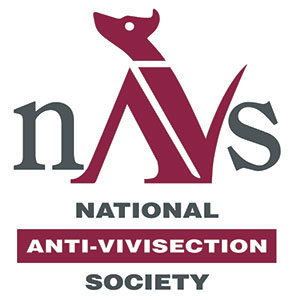
Animal testing, also known as animal experimentation, animal research, and in vivo testing, is the use of non-human animals, such as model organisms, in experiments that seek to control the variables that affect the behavior or biological system under study. This approach can be contrasted with field studies in which animals are observed in their natural environments or habitats. Experimental research with animals is usually conducted in universities, medical schools, pharmaceutical companies, defense establishments, and commercial facilities that provide animal-testing services to the industry. The focus of animal testing varies on a continuum from pure research, focusing on developing fundamental knowledge of an organism, to applied research, which may focus on answering some questions of great practical importance, such as finding a cure for a disease. Examples of applied research include testing disease treatments, breeding, defense research, and toxicology, including cosmetics testing. In education, animal testing is sometimes a component of biology or psychology courses.

In the animal rights movement, cruelty-free is a label for products or activities that do not harm or kill animals anywhere in the world. Products tested on animals or made from animals are not considered cruelty-free, since these tests are often painful and cause the suffering and death of millions of animals every year.
Cruelty Free International is a British animal rights and advocacy group that campaigns for the abolition of all animal testing. It organises certification of cruelty-free products which are marked with the symbol of a leaping bunny.

François Magendie was a French physiologist, considered a pioneer of experimental physiology. He is known for describing the foramen of Magendie. There is also a Magendie sign, a downward and inward rotation of the eye due to a lesion in the cerebellum. Magendie was a faculty at the College of France, holding the Chair of Medicine from 1830 to 1855.

Sir David Ferrier FRS was a pioneering Scottish neurologist and psychologist. Ferrier conducted experiments on the brains of animals such as monkeys and in 1881 became the first scientist to be prosecuted under the Cruelty to Animals Act, 1876 which had been enacted following a major public debate over vivisection.

The People's Petition was an online campaign to express support for medical experimentation using animals in the United Kingdom. Within a year of launch the number of signatures exceeded 21,850 and included Tony Blair, the then-serving Prime Minister.
Gillian Rose Langley is a British scientist and writer who specialises in alternatives to animal testing and animal rights. She was, from 1981 until 2009, the science director of the Dr Hadwen Trust for Humane Research, a medical research charity developing non-animal research techniques. She was an anti-vivisection member of the British government's Animal Procedures Committee for eight years, and has worked as a consultant on non-animal techniques for the European Commission, and for animal protection organizations in Europe and the United States. Between 2010 and 2016 she was a consultant for Humane Society International.

The National Anti-Vivisection Society (NAVS) is an international non-profit animal protection group, based in London, working to end animal testing, and focused on the replacement of animals in research with advanced, scientific techniques. Since 2006, the NAVS has operated its international campaigns under the working name Animal Defenders International (ADI), and the two groups now work together under the ADI name.

The history of animal testing goes back to the writings of the Ancient Greeks in the 4th and 3rd centuries BCE, with Aristotle and Erasistratus one of the first documented to perform experiments on nonhuman animals. Galen, a physician in 2nd-century Rome, dissected pigs and goats, and is known as the "Father of Vivisection." Avenzoar, an Arabic physician in 12th-century Moorish Spain who also practiced dissection, introduced animal testing as an experimental method of testing surgical procedures before applying them to human patients. Although the exact purpose of the procedure was unclear, a Neolithic surgeon performed trepanation on a cow in 3400-3000 BCE. This is the earliest known surgery to have been performed on an animal, and it is possible that the procedure was done on a dead cow in order for the surgeon to practice their skills.

The Boyd Group is a Britain-based, independent think tank considering issues relating to animal testing.

The Brown Dog affair was a political controversy about vivisection that raged in Britain from 1903 until 1910. It involved the infiltration of University of London medical lectures by Swedish feminists, battles between medical students and the police, police protection for the statue of a dog, a libel trial at the Royal Courts of Justice, and the establishment of a Royal Commission to investigate the use of animals in experiments. The affair became a cause célèbre that divided the country.

The Cruelty to Animals Act 1876 was an Act of the Parliament of the United Kingdom which set limits on the practice of, and instituted a licensing system for animal experimentation, amending the Cruelty to Animals Act 1849. It was a public general Act. The Act was replaced 110 years later by the Animals Act 1986.
Animal ethics is a branch of ethics which examines human-animal relationships, the moral consideration of animals and how nonhuman animals ought to be treated. The subject matter includes animal rights, animal welfare, animal law, speciesism, animal cognition, wildlife conservation, wild animal suffering, the moral status of nonhuman animals, the concept of nonhuman personhood, human exceptionalism, the history of animal use, and theories of justice. Several different theoretical approaches have been proposed to examine this field, in accordance with the different theories currently defended in moral and political philosophy. There is no theory which is completely accepted due to the differing understandings of what is meant by the term ethics; however, there are theories that are more widely accepted by society such as animal rights and utilitarianism.
Women have played a central role in animal advocacy since the 19th century. The animal advocacy movement – embracing animal rights, animal welfare, and anti-vivisectionism – has been disproportionately initiated and led by women, particularly in the United Kingdom. Women are more likely to support animal rights than men. A 1996 study of adolescents by Linda Pifer suggested that factors that may partially explain this discrepancy include attitudes towards feminism and science, scientific literacy, and the presence of a greater emphasis on "nurturance or compassion" amongst women. Although vegetarianism does not necessarily imply animal advocacy, a 1992 market research study conducted by the Yankelovich research organization concluded that "of the 12.4 million people [in the US] who call themselves vegetarian, 68% are female, while only 32% are male".
The concept of moral rights for animals is believed to date as far back as Ancient India, particularly early Jainist and Hindu history. What follows is mainly the history of animal rights in the Western world. There is a rich history of animal protection in the ancient texts, lives, and stories of Eastern, African, and Indigenous peoples.

The American Anti-Vivisection Society (AAVS) is a Jenkintown, Pennsylvania-based animal protectionism organization created with the goal of eliminating a number of different procedures done by medical and cosmetic groups in relation to animal cruelty in the United States. It seeks to help the betterment of animal life and human-animal interaction through legislation reform. It was the first anti-vivisection organization founded in the United States.

In anatomy and neurophysiology, this is the finding that the anterior spinal nerve roots contain only motor fibers and posterior roots only sensory fibers and that nerve impulses are conducted in only one direction in each case. The nature and the physiology of the phenomena were described independently by the British anatomical scientist Sir Charles Bell and the French physiologist François Magendie, later confirmed by the German physiologist Johannes Peter Müller.
Marie Françoise "Fanny" Bernard was a French anti-vivisection campaigner and creator of an anti-vivisection society. She was the wife of the pioneer in experimental research in physiology, Claude Bernard.
Rise for Animals is a national, registered 501(c)(3) nonprofit animal rights organization which aims to end nonhuman animal experimentation. It has been described as "one of the oldest and wealthiest anti-vivisection organizations in the United States".

Animal welfare and rights in India regards the treatment of and laws concerning non-human animals in India. It is distinct from animal conservation in India.














